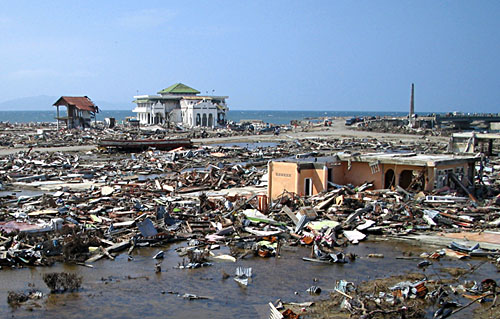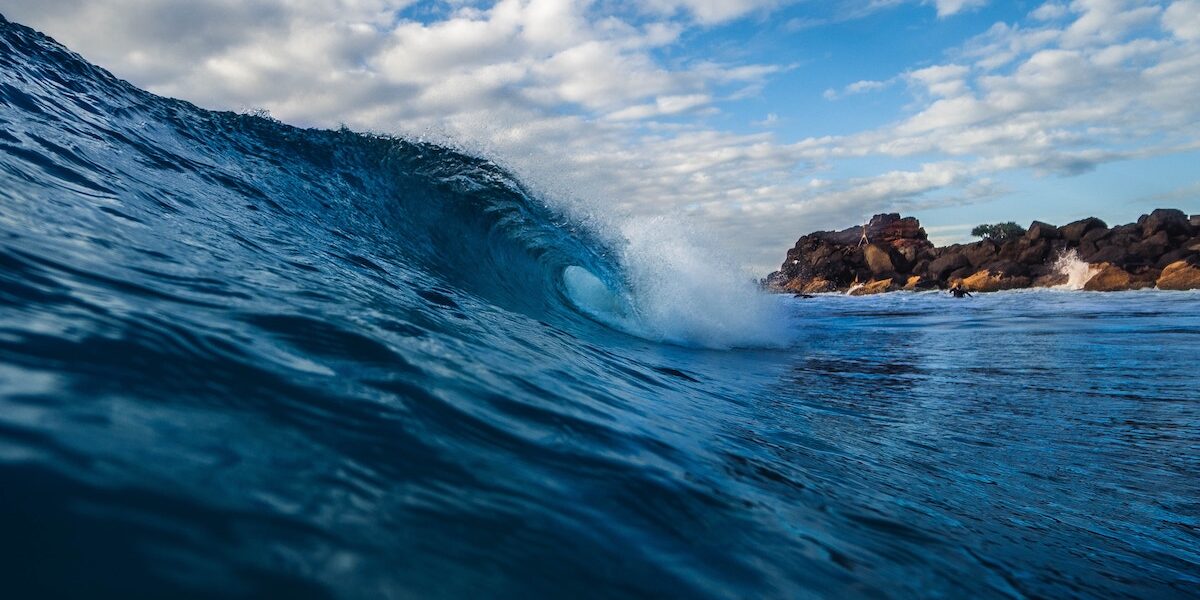By Mark J. Spalding
Early this month, Fred Pearce wrote an excellent piece for Yale 360 about restoration efforts along the coast of Sumatra following the major earthquake and devastating tsunami that followed on Boxing Day 2004.
The powerful force swept hundreds of miles, affecting fourteen countries, with the worst damage occurring in Thailand, Indonesia, India, and Sri Lanka. Nearly 300,000 people died. Hundreds of thousands more were dislocated. Thousands of communities were physically, emotionally, and economically devastated. The world’s humanitarian resources were stretched to meet the needs of so many in so many places across such a broad geography—especially since entire shorelines had been completely redrawn and former agricultural lands were now part of the seabed.

Shortly after that terrible day, I received a request from Dr. Greg Stone who was then at New England Aquarium asking The Ocean Foundation for support for a different kind of response. Could our fledgling organization help finance a special research survey to determine whether the coastal communities and other areas with healthier mangrove forests had fared better in the aftermath of the tsunami than those without them? With a willing donor and some of our tsunami emergency funds, we provided a small grant to help support the expedition. Dr. Stone and his fellow scientists turned out to be right—healthy coastal systems, especially mangrove forests, did provide protection for the communities and terrain behind them. Furthermore, the areas where shrimp farming or unwise development had destroyed the buffering forests, damage to human and natural resource communities was particularly bad—delaying recovery of fisheries, farming, and other activities.
Oxfam Novib and other organizations partnered to include replanting with the humanitarian aid. And it turned out that they had to be adaptive in their approach—in the wake of the disaster, it was hard for devastated communities to focus on planting for future protection, and other obstacles emerged as well. Needless to say, a 30-foot wave moves a lot of sand, dirt, and debris. That meant that mangroves could and were planted where there was the right wet mud habitat for doing so. Where sand now dominated, other trees and plants were planted after it became clear that mangroves would no longer thrive there. Still other trees and bushes were planted upland from those.
Ten years later, there are thriving young coastal forests in Sumatra and elsewhere in the tsunami impact zone. A combination of micro-finance, subsidy, and visible success helped motivate communities to fully engage as they watched fisheries and other resources resurge in the roots of the mangroves. Like seagrass meadows and coastal marshes, mangrove forests not only nurture fish, crabs, and other animals, they also store carbon. More and more studies from the Gulf of Mexico to the northeastern United States have affirmed the value of healthy coastal systems to bear the brunt of storms and surging water, mitigating its effects on coastal communities and infrastructure.
Like many of my colleagues, I would like to believe that this lesson of coastal protection could become part of how we think every day, not just after the disaster. I would like to believe when we see healthy marshes and oyster reefs, we believe that they are our insurance policy against disaster. I would like to believe that we can understand how we can enhance the safety of our communities, our food security, and our future health by protecting and restoring our seagrass meadows, coastal marshes, and mangroves.
Photo credit: AusAID / Flickr, Yuichi Nishimura / Hokkaido University)







